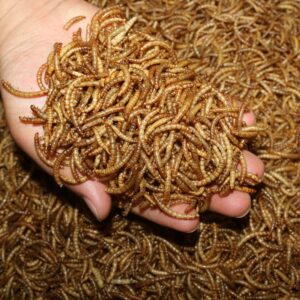Welcome to Mealworms, the gastronomic wonders that are attracting attention for anyone aiming at environmentally friendly animal feed. When it comes to protein, these small, wriggly darkling beetle larvae pack a major blow for premium pet food Canada. Not just for birds, though, are dried mealworms. Starting with backyard chicken keepers, reptile owners, fisherman, and even some daring chefs are catching on.

Let’s discuss numbers. By dry weight, dried mealworms average 50% protein and about 25% fat. Thus, calorie-for—calorie they provide more protein than beef or fish. Finding a natural treat for hens, wild birds, hedgehogs, or turtles that offers as much value for your money would prove difficult. These crunchy nibbles keep for months if stored somewhere cold and dry, resist spoiling, sidestep mold, and dry out naturally.
Why are people running to them? Mealworm farming reduces greenhouse gas emissions to a tenth of those of conventional livestock. 14.5% of world greenhouse emissions come from livestock. By contrast, mealworm farming is quite clean. They eat organic garbage like oat bran or discarded vegetables, guzzle relatively little water, and occupy a tiny area. Talk on frugal!
While they cost more than a sack of corn or millet, dried mealworms punch above their weight in nutrients. Still, you are not obliged to go broke. Most authorities agree that adding supplements instead of substituting the regular feed works best. For chickens, a handful of mealworms per day results in better egg output, glossier feathers, and more bouncy energy.
Inquiring about safety? Raised for animal use, mealworms are controlled and generally regarded as harmless. Still, avoid cheap imports or inferior vendors. Not the first concern for certain providers is eco-friendly and safe. Look for reputable products; always examine the packaging. If in doubt, get ideas from a nearby farm supply shop. Nobody likes a batch that is shaky; even your hens deserve better!